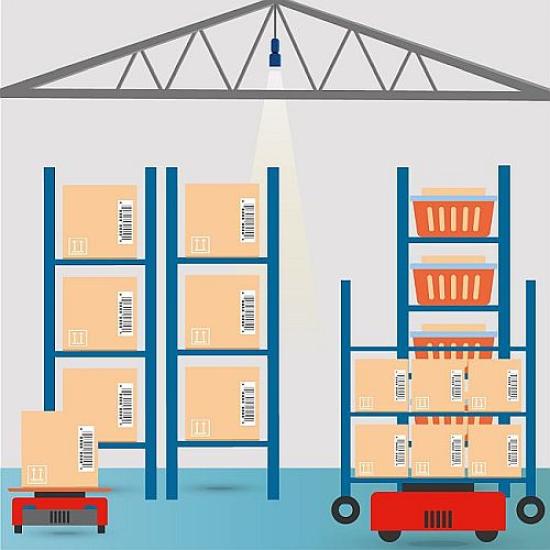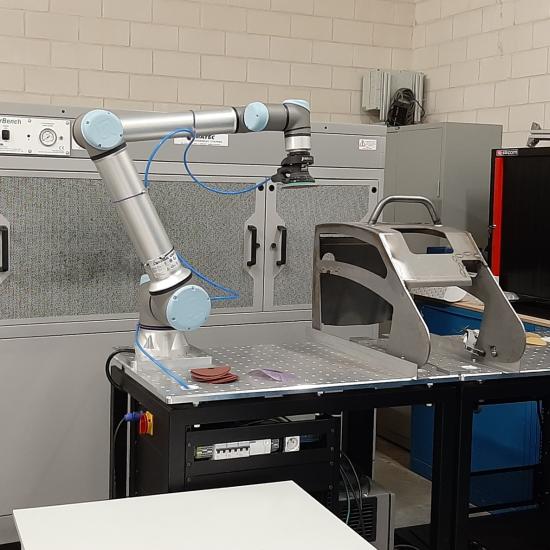Innovation and smart automation have for years been of key importance to JTEKT Torsen Europe, Factory of the Future 2016 and 2019, from Strépy-Bracquegnies in the Walloon region. The company is a global market leader in the production of limited-slip differentials for lorries with four-wheel drive.
The differentials operate 100 percent mechanically and are made up of a series of complex steel gears with internal and external gearings. To stay competitive, further optimisation is needed. The company is therefore investigating whether it can introduce more automation on the shop floor, and consulted Sirris for help with this. It worked with Sirris to investigate the deployment of an AGV for transport and the automation of quality assurance and assembly.
AGV as a logistical aid
Initially, the question of whether it was possible to use an AGV (automated guided vehicle) equipped with a cobot to transport tools from the CNC machines to the warehouse and back was investigated. An overview of possible navigation techniques was presented. An AGV with its own map structure turned out be the most flexible. It was found that there was plenty of time to cover the distance with the specific machines that were selected. A scenario was drawn up in which the various options for practical implementation were investigated, as well as the question of which AGV would be best for this job. Sirris put JTEKT in contact with potential suppliers of suitable AGVs.
Quality control
The second automation issue related to quality control. In the production hall, the products are manually checked against various requirements in terms of dimensions, roughness, etc. The products are transported in boxes on each pallet, tested and prepared for packaging. JTEKT wanted to know whether some or all of the tasks currently performed by quality inspectors could be taken over by collaborative robots. Since the range of tasks is very wide, first a selection had to be made and it was investigated which systems could meet the company's needs. Based on this feasibility study, JTEKT decided to purchase a Ko-ga-me and a KUKA LBR iiwa cobot to assist with quality tests and to implement them.
Assembly
A third test case covered assembly that is currently still being performed manually on two production lines. This related to housings comprising various components that had to be fitted together using a tongue-and-groove system. JTEKT wanted to know whether a cobot could assist with this part of its production. Sirris set up a test rig with two cobots, which was further adapted to achieve the desired results. Using this information, JTEKT could proceed to the decision-making phase.


